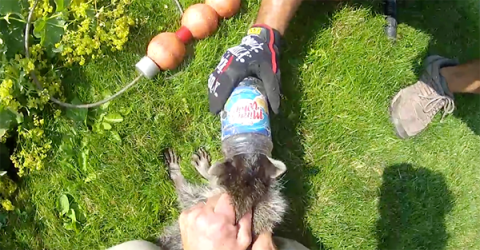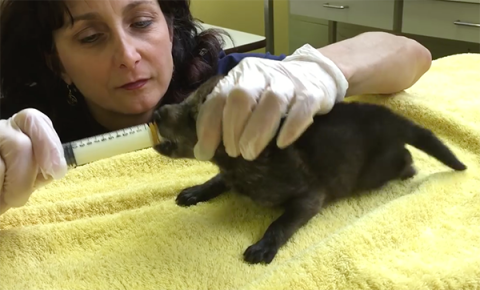
The Toronto Wildlife Centre rescues wild animals, rehabilitates them, offers emergency medical care and educates the public about the best way to manage everything from squirrels in the attic to a deer hit by a car to a bird snared by fishing wire.
The TWC is run mostly by volunteers and relies on public (and not government) monetary assistance. And its numbers illustrate how central it is to the sprawling city, even if people only stop to think about it when a crisis arises.
According to the TWC website, its hotline staff handle 30,000 calls per year from residents of the GTA and beyond, advising the community about a diversity of wildlife situations — from medical emergencies to wildlife conflicts to natural history. Approximately 5,000 sick, injured and orphaned animals representing 270 unique species are managed annually.
With its deep and detailed information, the Toronto Wildlife Centre’s website is an excellent resource for the public. Wondering if that’s a baby squirrel — or is it a mouse — in the garden? And is it an orphan or just temporarily alone? Not sure what constitutes effective first aid for a distressed animal? The TWC site can help.
At the heart of the TWC is Nathalie Karvonen, a wildlife biologist who founded Toronto Wildlife Centre in 1991 and has served as executive director ever since. She is also a passionate, insanely knowledgeable and eloquent advocate for animals and she spoke to Samaritanmag about dos and don’ts for various wildlife encounters... just in time for summer.
Do you typically see a spike in calls in spring and summer?
“Absolutely. There’s a few factors for that: the wildlife world kind of explodes with breeding season, babies, plus animals emerge from hibernation, and migratory birds return to the area or pass through the area. Human activity also explodes; everyone’s trying to get their garden ready, opening up the backyard and the barbeque that’s been sitting there for six months. So people will be doing things and will discover wild animals or attract wild animals.”
And is the barbeque-animal discovery something you often see?
“Yes, animals like red squirrels might take up residence under a barbeque cover. Plus animals will take up residence in sheds, under porches. Just on the weekend I was contacted by someone who was out in the yard, cleaning up, raking dried grass and she uncovered a cottontail rabbit’s nest. Cottontail rabbits will nest in a depression in the ground and cover it over with dried grass and bits of fur from their underbelly. The mothers only come back a few times during the night to feed the babies. So if someone uncovers a nest like that, they assume the babies are orphans. We can get up to 50 calls a day like that.”
Your website offers good advice on how to distinguish between orphan animals and ones just temporarily left alone. Is that something that comes up a lot?
“Yes though often the animals are orphans. It depends on the circumstances. The situation I described with the rabbits, where someone uncovers an intact nest, those animals are unlikely to be orphans. However uncovering a nest that wasn’t covered but had babies inside would point to orphans. While we don’t want people to intervene without properly consulting with us or researching, at the same time we don’t want to be too glib and say, ‘If you find a baby just leave it,’ because it might be an animal that needs help. Because we work with over 270 different species, one answer doesn’t fit all situations when it comes to babies.”
What are some common mistakes people make when dealing with wildlife?
“There’s a lot of them. Some people don’t recognize the importance of calling for help right away in the case of a medical emergency. There seems to be a disconnect there. I often talk about this with my husband who is a paramedic. People will find an animal hit by a car. It could be bleeding or have broken bones and very well-intention people worry about feeding the animal. I mean… if my husband found someone lying on the road bleeding he wouldn’t think ‘I need to get this person a sandwich.’ Sometimes people will hang on to injured animals for days – or weeks – before we get the call. Not only is the animal in pain and terrified, it might no longer be able to be repaired. So people need to act quickly when there are injuries.
“And of course there are preventable injuries. Cats going outdoors is a big one. I love cats and I own a cat, so it’s not an anti-cat thing. But cats have an enormous impact on the populations of songbirds and small mammals. It’s a global issue multiplied by millions of cats and we need a shift in societal thinking about this.

And what about animals like turtles and snakes?
“Unfortunately, people do encounter injured turtles on the road. Even turtles that appear not to be injured should be checked out because the injury might be underneath. In that case, it’s best to try and lift the turtle — use a stick if it’s a snapping turtle — to have a look and then if it’s fine, point the turtle away from the road. If the turtle is injured it needs to get to a wildlife rehabilitation centre right away. That can be inconvenient if you happen to be going to the cottage but a broken shell is bones, and it’s incredibly painful. Sitting in a box for a couple of days at your cottage is very painful for that animal.
“We don’t get many calls about injured snakes. Usually a call is from someone who encounters a snake in their yard and they’re terrified and think it’s dangerous. That’s where we try and educate people; there is no danger from snakes in Southern Ontario. It’s also worth noting that terrestrial rabies is very rare in Ontario. It’s still present in some bat populations because we can’t figure out how to vaccinate them. But among raccoons, foxes, skunks rabies has been all but eliminated.”
The Toronto Wildlife Centre is a tremendous resource. Where else can people find good information about wildlife?
“We help where we can beyond our boundaries and we do have a good website. There are plenty of good online resources but people do want to make sure they are looking at a credible source as with all online information. Bob’s Raccoon Information may not be the site you want to consult (laughs). People want to make sure they seek information from a credible place.”
The TWC site offers links to International Wildlife Rehabilitation Council, the National Wildlife Rehabilitators Association, and the Ontario Wildlife Rehabilitation and Education Network.
If there is one piece of information people should always keep in mind with respect to wildlife, what should it be?
“Our main purpose is to help people and wildlife co-exist and that really is a two-way street. There was a recent wildlife report issued by the City of Toronto that aptly concluded that it was, for the most part, human behaviour that has to change. A lot of interaction between people and wildlife – whether it’s injured wildlife or conflict situations – has to do with our activities. So I would encourage people with fears or concerns about wildlife to do some research and figure out how best to co-exist.”
Air Jordan 1 Mid "What The Multi-Color" For Sale